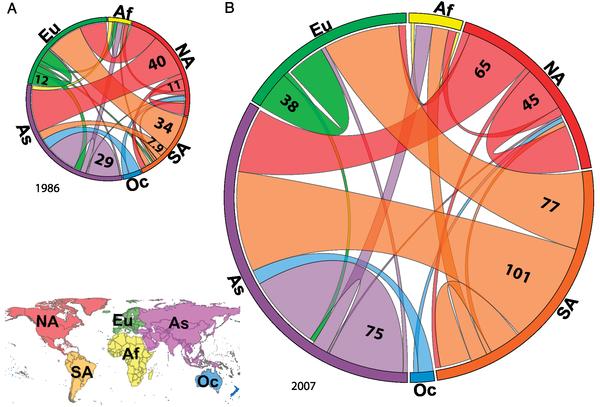“Virtual water,” a barometer of global water resources

Agriculture uses 60% of the global water consumption. © photos.com
When goods are produced, water is used in the process. Even though this water is “virtual,” tracking its import and export gives a crucial indication of the evolution of world water resources. An international team of hydrologists has studied the global trade of virtual water, and is publishing an article this week in the journal PNAS outlining a number of striking conclusions.
In 2007, the world’s “virtual water trade” was 567 billion liters - more than six times the volume of Lake Geneva. This was double the 1986 volume.
Every good produced at a given location, particularly agricultural goods, requires water. When the good is imported into another country, that country is also importing the water that went into its production; this is “virtual water.” “This concept is very interesting when one observes it in terms of its flow between countries, particularly in terms of how the flow of virtual water evolves over time,” explains Andrea Rinaldo, director of EPFL’s Ecohydrology Laboratory (ECHO). The concept of virtual water was invented twenty years ago by John Anthony Allen, a British geographer and professor at King’s College London.
Rinaldo and his colleagues at Princeton University are publishing an article this week in the Proceedings of the National Academy of Science (PNAS) outlining the results of a study they conducted comparing the global trade of virtual water between 1986 and 2007. They found that Asia increased its virtual water imports by 170% during this period. China made a huge contribution to this statistic as a result of a political decision to import massive quantities of soybeans starting in 2000. China’s soy now comes almost exclusively from Brazil. Since China’s water use efficiency is lower than Brazil’s, this results in reduced use of water for irrigation than if the soy had been produced domestically, but the price exacted is increased pressure on the Amazonian rainforest. In general, Asia’s principal virtual water trade partners are now mostly in South America.

This figure shows the evolution of virtual water trade flows between1986 and 2007, for different parts of the world.
“One of our most remarkable observations is that global food production leads to an increased level of efficiency in the use of global water resources,” says Rinaldo. As in the example with China and soybeans, countries that have low water efficiency import more of it from those that are water-rich. In 2007, this led to a 9% increase in global agricultural output per liter of water used.
A self-organizing network
The Princeton and EPFL researchers found that every country is connected to an average of 47 virtual water partners. “It is interesting to see that these trades are self-organizing networks, with links and nodes, and that these rearrange by themselves, for example in response to economic embargoes,” he explains. About 6,500 links were identified in 2007, a quantity that doubled between 1986 and 2001 before stabilizing.
An understanding of these networks provides valuable tools for making economic and societal predictions on a global scale. They shed light on water use, which, at the level of an individual country, can be revealed as non-sustainable. “We can now come up with hypotheses addressing the future development of virtual water trades and get a glimpse into which countries will be rich and poor in the future. Our hope is that this will make an impact such that population growth doesn’t condemn particular regions of the world to famine.”